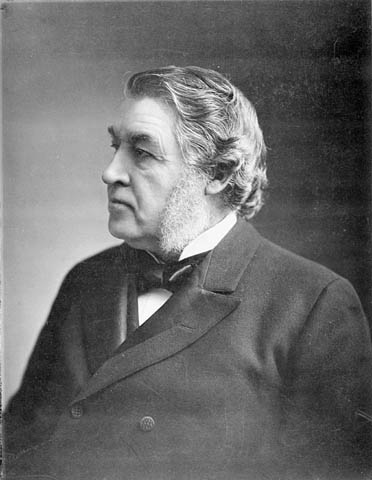Browse "Politics & Law"
-
Article
Northwest Territories and Confederation
The Northwest Territories (NWT) entered Confederation in 1870 after Canada acquired Rupert’s Land and the North-Western Territory from the Hudson’s Bay Company. The smaller territory now known as the NWT is what remains after the creation of several other provinces and territories out of the original 1870 lands.
"https://d2ttikhf7xbzbs.cloudfront.net/media/media/a08da9c3-b38b-4f80-a425-a29b706528af.jpg" // resources/views/front/categories/view.blade.php
https://d2ttikhf7xbzbs.cloudfront.net/media/media/a08da9c3-b38b-4f80-a425-a29b706528af.jpg
-
List
Notable Indigenous Rights Court Cases
Rights of Indigenous peoples in Canada are recognized within the Constitution of Canada, particularly in section 35. While the Constitution of Canada states “The existing aboriginal and treaty rights of the aboriginal peoples of Canada are hereby recognized and affirmed,” these rights are not explicitly stated within the Constitution. As a result, there have been numerous Supreme Court of Canada cases related to Indigenous rights. Below is a list of prominent Indigenous rights Supreme Court of Canada cases. Note: This is not a complete list of all Supreme Court of Canada cases related to Indigenous peoples or rights.
"https://development.thecanadianencyclopedia.ca/images/tce_placeholder.jpg?v=e9dca980c9bdb3aa11e832e7ea94f5d9" // resources/views/front/categories/view.blade.php
https://development.thecanadianencyclopedia.ca/images/tce_placeholder.jpg?v=e9dca980c9bdb3aa11e832e7ea94f5d9
-
Article
Notwithstanding Clause
Section 33 of the Canadian Charter of Rights and Freedoms is known as the notwithstanding clause. Also known as the override clause, it is part of the Constitution of Canada. The clause allows federal, provincial or territorial governments to temporarily override, or bypass, certain Charter rights. These overrides are subject to renewal after five years. Although the clause is available to governments, its use is politically difficult and therefore rare. It is known colloquially as the “nuclear option,” because its use is considered extremely severe. Since the Constitution was patriated in 1982, the clause has been used only a handful of times by various provinces. The federal government has never invoked the clause.
"https://d2ttikhf7xbzbs.cloudfront.net/media/media/eb6ec132-1f25-4df9-b54d-d101ef2e4e7e.jpg" // resources/views/front/categories/view.blade.php
https://d2ttikhf7xbzbs.cloudfront.net/media/media/eb6ec132-1f25-4df9-b54d-d101ef2e4e7e.jpg
-
Article
Nova Scotia 1714-84
Confirmed as British by the Treaty of Utrecht in 1713, the peninsula of Nova Scotia was neglected until 1749 - a period of "phantom rule" and "counterfeit suzerainty.
"https://d2ttikhf7xbzbs.cloudfront.net/media/media/12f25a44-2508-4e64-9dd1-8eb4b212345d.jpg" // resources/views/front/categories/view.blade.php
https://d2ttikhf7xbzbs.cloudfront.net/media/media/12f25a44-2508-4e64-9dd1-8eb4b212345d.jpg
-
Article
Nova Scotia and Confederation
Nova Scotia was one of the four founding provinces of Canada. It joined New Brunswick, Ontario and Quebec in Confederation on 1 July 1867. However, this was mainly because Confederation delivered the Intercolonial Railway to the Maritimes, and because of the efforts of Sir Charles Tupper. His government passed approval for Confederation in the colonial legislature despite popular opposition. (See Confederation’s Opponents.) Confederation was met with mass protests in the colony. Joseph Howe led a two-year effort to repeal the union. (See Repeal Movement.) But Howe finally decided he could do more to help his province by working inside the federal government. He joined the federal Cabinet in 1869.
"https://d2ttikhf7xbzbs.cloudfront.net/media/media/7b457631-bb6e-40ee-bf61-fab12a06fb6d.jpg" // resources/views/front/categories/view.blade.php
https://d2ttikhf7xbzbs.cloudfront.net/media/media/7b457631-bb6e-40ee-bf61-fab12a06fb6d.jpg
-
Macleans
Nova Scotia Government Falls
For days, Nova Scotia Tory Leader John Hamm withstood the pressure.This article was originally published in Maclean's Magazine on July 1, 1999
"https://development.thecanadianencyclopedia.ca/images/tce_placeholder.jpg?v=e9dca980c9bdb3aa11e832e7ea94f5d9" // resources/views/front/categories/view.blade.php
https://development.thecanadianencyclopedia.ca/images/tce_placeholder.jpg?v=e9dca980c9bdb3aa11e832e7ea94f5d9
-
Article
Nova Scotia Pharmaceutical Society Case
In the Nova Scotia Pharmaceutical Society case (1992), the Supreme Court took into account the doctrine of vagueness.
"https://development.thecanadianencyclopedia.ca/images/tce_placeholder.jpg?v=e9dca980c9bdb3aa11e832e7ea94f5d9" // resources/views/front/categories/view.blade.php
https://development.thecanadianencyclopedia.ca/images/tce_placeholder.jpg?v=e9dca980c9bdb3aa11e832e7ea94f5d9
-
Editorial
Nova Scotia: The Cradle of Canadian Parliamentary Democracy
The following article is an editorial written by The Canadian Encyclopedia staff. Editorials are not usually updated.
"https://d2ttikhf7xbzbs.cloudfront.net/media/media/2756e679-0a69-460f-a9df-a12d63bd1a22.png" // resources/views/front/categories/view.blade.php
https://d2ttikhf7xbzbs.cloudfront.net/media/media/2756e679-0a69-460f-a9df-a12d63bd1a22.png
-
Macleans
NS Premier John Savage Resigns
According to his friends and longtime political associates, there are two John Savages. The first is the private man, whom they describe as warm and compassionate, a doting grandfather, an affable golf companion.This article was originally published in Maclean's Magazine on March 31, 1997
"https://development.thecanadianencyclopedia.ca/images/tce_placeholder.jpg?v=e9dca980c9bdb3aa11e832e7ea94f5d9" // resources/views/front/categories/view.blade.php
https://development.thecanadianencyclopedia.ca/images/tce_placeholder.jpg?v=e9dca980c9bdb3aa11e832e7ea94f5d9
-
Article
Numbered Treaties
The Numbered Treaties were a series of 11 treaties made between the Crown and First Nations from 1871 to 1921. The Numbered Treaties cover the area between the Lake of the Woods (northern Ontario, southern Manitoba) to the Rocky Mountains (northeastern British Columbia and interior Plains of Alberta) to the Beaufort Sea (north of Yukon and the Northwest Territories). The treaties provided the Crown with land for industrial development and white settlement. In exchange for their traditional territory, government negotiators made various promises to First Nations, both orally and in the written texts of the treaties. These include special rights to treaty lands and the distribution of cash payments, hunting and fishing tools, farming supplies, and the like. These terms of agreement are controversial and contested. To this day, the Numbered Treaties have ongoing legal and socio-economic impacts on Indigenous communities. (See also Treaties with Indigenous Peoples in Canada.)(This is a full-length entry about the Numbered Treaties. For a plain-language summary, please see Numbered Treaties (Plain-Language Summary.)
"https://d2ttikhf7xbzbs.cloudfront.net/media/media/4913942c-18ec-4c1c-be27-6d74ec04cfbe.jpg" // resources/views/front/categories/view.blade.php
https://d2ttikhf7xbzbs.cloudfront.net/media/media/4913942c-18ec-4c1c-be27-6d74ec04cfbe.jpg
-
Article
Nunavut and Confederation
Nunavut — meaning "our land" in the Inuit language Inuktitut — entered Confederation in 1999 as Canada's third territory and newest member of the country.
"https://d2ttikhf7xbzbs.cloudfront.net/media/media/c3b5ada1-b017-4ea1-ae8a-9d781a968d59.jpg" // resources/views/front/categories/view.blade.php
https://d2ttikhf7xbzbs.cloudfront.net/media/media/c3b5ada1-b017-4ea1-ae8a-9d781a968d59.jpg
-
Macleans
Nurses Defy Quebec Government
Under a hazy sky, Helen Beath clutched a placard on the picket line outside Montreal General Hospital. Even though she retired in May after 43 years of nursing, Beath returned to the hospital last week to support her former colleagues.This article was originally published in Maclean's Magazine on July 12, 1999
"https://development.thecanadianencyclopedia.ca/images/tce_placeholder.jpg?v=e9dca980c9bdb3aa11e832e7ea94f5d9" // resources/views/front/categories/view.blade.php
https://development.thecanadianencyclopedia.ca/images/tce_placeholder.jpg?v=e9dca980c9bdb3aa11e832e7ea94f5d9
-
Macleans
NWT Miner Guilty of Murder
For 15 agonizing weeks, the three women sat in the Yellowknife courtroom in a row directly behind Crown prosecutor Peter Martin.This article was originally published in Maclean's Magazine on January 30, 1995
"https://development.thecanadianencyclopedia.ca/images/tce_placeholder.jpg?v=e9dca980c9bdb3aa11e832e7ea94f5d9" // resources/views/front/categories/view.blade.php
https://development.thecanadianencyclopedia.ca/images/tce_placeholder.jpg?v=e9dca980c9bdb3aa11e832e7ea94f5d9
-
Article
Oakes Case (R v. Oakes)
In R v. Oakes (1986), David E. Oakes was accused of possession of drugs for the purpose of trafficking. The Supreme Court of Canada concluded that section 8 of the Narcotic Control Act runs counter to the presumption of innocence enshrined in section 11(d) of the Canadian Charter of Rights and Freedoms. Section 8 states that if a person is found in possession of a drug, he is presumed to have intended to traffic in it. This constitutes a limitation of rights and freedoms that cannot be justified in a free and democratic society, according to section 1 of the Charter. This judgement is the most important to date by the Supreme Court concerning section 1 of the Charter.
"https://d2ttikhf7xbzbs.cloudfront.net/media/media/c813762a-d4db-4a05-b769-18eb4e9b7957.jpg" // resources/views/front/categories/view.blade.php
https://d2ttikhf7xbzbs.cloudfront.net/media/media/c813762a-d4db-4a05-b769-18eb4e9b7957.jpg
-
Article
Obscenity
Obscenity became an offence in 1663 when Sir Charles Sidley was convicted for his behaviour after a drinking orgy. He appeared naked on a balcony and threw bottles filled with his own urine down among the people in Covent Garden.
"https://development.thecanadianencyclopedia.ca/images/tce_placeholder.jpg?v=e9dca980c9bdb3aa11e832e7ea94f5d9" // resources/views/front/categories/view.blade.php
https://development.thecanadianencyclopedia.ca/images/tce_placeholder.jpg?v=e9dca980c9bdb3aa11e832e7ea94f5d9
